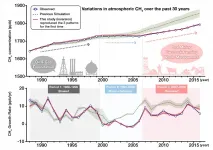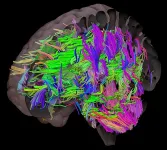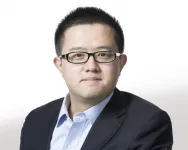(Press-News.org) Efforts to understand when corals reproduce have been given a boost thanks to a new resource that gives scientists open access to more than forty years' worth of information about coral spawning.
Led by researchers at Newcastle University, UK, and James Cook University, Australia, the Coral Spawning Database (CSD) for the first time collates vital information about the timing and geographical variation of coral spawning. This was a huge international effort that includes over 90 authors from 60 institutions in 20 countries.
The data can be used by scientists and conservationists to better understand the environmental cues that influence when coral species spawn, such as temperature, daylight patterns and the lunar cycle.
By providing access to data going back as far as 1978, it can also help researchers identify any long-term trends in the timing of spawning and provide additional evidence for differentiating very closely related coral species.
It will also provide an important baseline against which to evaluate future changes in regional and global patterns of spawning times or seasonality associated with climate change.
Most corals reproduce by expelling eggs and sperm into open water during short night-time spawning events. These events can be highly synchronised within and among species, with millions of colonies spawning at much the same time resulting in one of nature's most spectacular displays.
The discovery of multi-species synchronous spawning of scleractinian, or hard, corals on the Great Barrier Reef in the 1980s stimulated an extraordinary effort to document spawning times in other parts of the globe. However, much of the data remained unpublished until now, meaning that there was little information about the month, date, and time of spawning or geographical variation in these factors.
The new, open access database collates much of the disparate data into one place. The CSD includes over 6,000 observations of the time or day of spawning for more than 300 scleractinian species from 101 sites in tropical regions across the Indian and western Pacific oceans.
Dr James Guest, from the School of Natural and Environmental Sciences, Newcastle University, said: "Coral spawning times can be used to address many significant and fundamental questions in coral reef ecology. Knowing when corals spawn can assist coastal management - for example, if dredging operations cease during mass spawning events. It also has enormous potential for scientific outreach, education and tourism if spawning events can be witnessed in person or remotely."
Professor Andrew Baird from the Centre of Excellence for Coral Reefs Studies at James Cook University added: "The CSD is a dynamic database that will grow over time as new observations become available. Anyone can add data at any time by contacting us and we will update the online database annually.
"Our vision is to help advance many aspects of coral reef science and conservation at a time of unprecedented environmental and societal change. It will accelerate our understanding of coral reproductive biology and provide a baseline against which to evaluate any future changes in the time of spawning."
Coral reefs are one of the most species-rich marine ecosystems on the planet and provide enormous societal benefits such as food, tourism and coastal protection. Corals are the ecosystem engineers on reefs and provide much of the habitat complexity in much the same way that trees do in forests.
Coral reefs around the world are in sharp decline due to overfishing, pollution and warming seas caused by climate change and successful reproduction is one of the main ways that reefs can recover naturally from human disturbances. It is hoped therefore that the CSD will improve our ability to manage and preserve these remarkable ecosystems.
INFORMATION:
The Coral Spawning Database is available to the research community at Newcastle University's Open Research Data Repository: https://data.ncl.ac.uk/
Reference: An Indo-Pacific coral spawning database by Andrew H. Baird, James R. Guest, Alasdair J. Edwards et al, Scientific Data DOI: 10.1038/s41597-020-00793-8
(Singapore--16:45 p.m. SPT/3:45 EST January 29, 2021)--Two presentations from the ADAURA clinical trial advanced previous research that demonstrated improved disease-fee survival (DFS) outcomes for patients with surgically resected non-small cell lung cancer (NSCLC) receiving osimertinib. The data were reported today at the International Association for the Study of Lung Cancer's 2020 World Conference on Lung Cancer (WCLC) Singapore.
Osimertinib is a third-generation, irreversible, central nervous system-active, epidermal growth factor receptor (EGFR)-tyrosine kinase inhibitor. ADAURA is a randomized Phase III trial comparing adjuvant osimertinib with placebo in patients ...
Beyond the ski slopes, one of the most iconic symbols of the Alps are the alpine flowers. These plants are not only beautiful -- they are also used in liqueurs and medicines, and they form the foundation of the local food chains. But a recent study in Frontiers in Ecology and Evolution shows that, although plant diversity may initially increase with glacier retreat, many of these species may soon become endangered.
"Our results indicate that plant diversity will ultimately decrease once the glaciers disappear -- and up to 22% of the species we analyzed may locally disappear or even go extinct once the glaciers are gone," says lead author Dr Gianalberto Losapio of Stanford University in the USA. "We show that 'not all species are equal before global warming' and that there are some species ...
Methane (CH4) is the second most important greenhouse gas after carbon dioxide (CO2). Its concentration in the atmosphere has increased more than twice since the preindustrial era due to enhanced emissions from human activities. While the global warming potential of CH4 is 86 times as large as that of CO2 over 20 years, it stays in the atmosphere for about 10 years, much shorter than more than centuries of CO2. It is therefore expected that emission controlling of CH4 can benefit for relatively short time period toward the Paris Agreement target to limit the global warming well below 2 degrees.
A study by an international team, published ...
New research from the University of Sheffield has found being overweight is an additional burden on brain health and it may exacerbate Alzheimer's disease.
The pioneering multimodal neuroimaging study revealed obesity may contribute toward neural tissue vulnerability, whilst maintaining a healthy weight in mild Alzheimer's disease dementia could help to preserve brain structure.
The findings, published in The Journal of Alzheimer's Disease Reports, also highlight the impact being overweight in mid-life could have on brain health in older age.
Lead author of the study, Professor Annalena Venneri from the University of Sheffield's Neuroscience Institute and NIHR Sheffield Biomedical Research Centre, ...
Four million UK patients could benefit annually from genetic testing before being prescribed common medicines, according to new research from the University of East Anglia (UEA) in collaboration with Boots UK and Leiden University (Netherlands).
Researchers looked through 2019 NHS dispensing data across the UK to see how many patients are started on new prescriptions each year that could be potentially optimised by genetic testing.
They studied 56 medicines, including antidepressants, antibiotics, stomach ulcer treatments and painkillers where there are known drug-gene interactions.
And they found that in more than one in five occasions (21.1 ...
An interdisciplinary team of the Institut national de la recherche scientifique (INRS) used an innovative imaging technique for a better understanding of motor deficits in Amyotrophic Lateral Sclerosis (ALS). The researchers were able to follow the escape behaviour of normal and disease zebrafish models, in 3D. Their results have recently been published in Optica, the flagship journal of the Optical Society (OSA).
Professor Jinyang Liang, expert in ultra-fast imaging and biophotonics, joined an effort with Professor Kessen Patten, specialist in genetics and neurodegenerative diseases. The two groups were able to track the position of ...
New research from the University of Iowa and University Hospitals Cleveland Medical Center demonstrates that offspring can be protected from the effects of prenatal stress by administering a neuroprotective compound during pregnancy.
Working in a mouse model, Rachel Schroeder, a student in the UI Interdisciplinary Graduate Program in Neuroscience, drew a connection between the work of her two mentors, Hanna Stevens, MD, PhD, UI associate professor of psychiatry and Ida P. Haller Chair of Child and Adolescent Psychiatry, and Andrew A. Pieper, MD, PhD, a former UI faculty member, now Morley-Mather Chair of Neuropsychiatry at Case Western Reserve ...
-- Experts call for policy reform to improve ethnic equity of socioeconomic opportunity, service provision, and health outcomes. They also call for long-term studies to investigate how structural and institutional racism generate these ethnic inequalities in health.
In 15 out of 17 minority ethnic groups, health-related quality of life in older age (over 55 year-olds) was worse on average for either men, women, or both, than for White British people according to an observational study published in The Lancet Public Health journal.
In five of those groups - Bangladeshi, Pakistani, ...
Peer-reviewed / Simulation or Modelling / People
A new modelling study has estimated that from 2000 to 2030 vaccination against 10 major pathogens - including measles, rotavirus, HPV and hepatitis B - will have prevented 69 million deaths in low-income and middle-income countries (LMICs).
The study estimated that, as a result of vaccination programmes, those born in 2019 will experience 72% lower mortality from the 10 diseases over their lifetime than if there was no immunisation.
The greatest impact of vaccination was estimated to occur in children under five - mortality from the 10 diseases in ...
Cities are not all the same, or at least their evolution isn't, according to new research from the University of Colorado Boulder.
These findings, out this week in Nature Communications Earth and Environment and Earth System Science Data, buck the historical view that most cities in the United States developed in similar ways. Using a century's worth of urban spatial data, the researchers found a long history of urban size (how big a place is) "decoupling" from urban form (the shape and structure of a city), leading to cities not all evolving the same--or even close.
The researchers hope that by providing this look at the past with this unique data set, they'll be able to glimpse the future, including the impact of population growth on cities or ...





